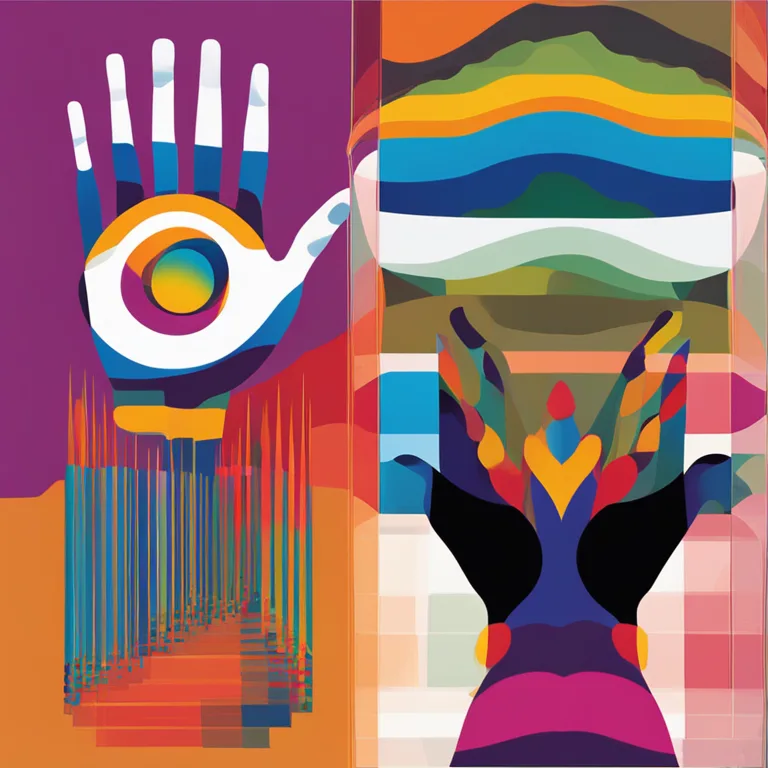
Are Palm Lines Hereditary? Insights from Palmistry
The intricate lines on our palms raise the question of whether they are passed down genetically. Dive into the intersection of genetics and palmistry.
article by Nora Pennington
The Intriguing Inquiry into Palm Lines
Are the mysterious lines etched into our palms a blueprint passed down from our ancestors, engraved with familial signatures? This question stirs curiosity both in scientific circles and among palmistry enthusiasts. Our palms serve as unique identifiers, much like fingerprints, employing a spectrum of patterns and lines that are believed by some to narrate our personality traits, potential life paths, and even health predispositions. Yet, unlike fingerprints, which are widely recognized as genetically determined, the debate over the inheritance of palm lines is much more nuanced and cloaked in the enigma.

Genetic Factors Versus Environmental Influence
A foray into the genetic basis of palmistry reveals a nuanced interplay between inheritance and individual development. Genetic makeup indisputably plays a significant role in determining physical characteristics. However, when it comes to the dermatoglyphics of our hands—which include fingerprints and palm lines—environmental factors during prenatal development also yield a considerable impact. Studies have shown that the fetal environment, such as the position within the womb and the density of amniotic fluid, can influence the formation of these dermal lines, suggesting that palm lines are not purely a genetic endowment.

Scientific Research and Comparative Studies
Emerging research in the fields of dermatoglyphics and genetics seeks to unravel the mystery behind our palm patterns. Comparative studies of identical twins, who share the same genetic code, have demonstrated that while there are similarities in their palm lines, distinct differences also exist. This phenomenon indicates that while genetics lay the foundational grid, the exact etching of palm lines may be honed by unique factors during gestation—making them individualistic even amongst genetically identical individuals.

Palmistry Perspective on Heritability
From the perspective of practitioners of palmistry, there's often a belief in the hereditary nature of certain palm characteristics. Professional palmists might point to recurring themes within family lines that manifest in the lines and mounts of the palm, suggesting a familial pattern. Nonetheless, palmists typically acknowledge that these lines are not fixed from birth; rather, they are prone to change over the lifespan of an individual, reflecting personal growth, experiences, and alterations in one’s life path.

Lines of the Palm as Personal Narratives
Ultimately, the elegant dance of our palm lines weaves together genetics and life experience into a personal narrative. Heart lines may tell stories of love and connection, head lines may chart intellectual journeys, while life lines map out vitality and willpower. Whether these tales have been whispered down the generations or are being told for the first time remains an enigma that perhaps adds to the mystique and appeal of palmistry as an ancient practice.
Future of Palm Line Genetics
Looking to the annals of future research and technological advancement, one can anticipate deeper insights emerging at the intersection of genetics and palmistry. As genetic sequencing becomes more accessible and sophisticated, we may yet uncover the extent to which our palm lines are a genetic inheritance versus a unique personal insignia—an endeavor sure to captivate both scientists and spiritualists alike.
Published: 1/5/2024
Modified: 1/5/2024
More predictions
Come back here soon to learn more about yourself and your future


The Essence of Palmistry: A Modern Guide
Delve into the modern practice of Palmistry: understanding the lines and shapes of your hands to reveal insights about your personality and future.


The Essence of Hand Analysis: A Guide to Palmistry
Delve into the art of palmistry, the study of hands, revealing how reading palms can provide insight into one's personality and future.


The Dynamic Nature of Palm Lines Explored
Discover why palm lines can change over time, delving into the science behind these shifts and what they might signify in the realm of palmistry.